#western han
Text
Imperial Chinese Harem Systems part 3
Western Han
Empress (皇后 ; huáng hòu)
Lady of Bright Deportment (昭儀; zhāo yí)
Lady of Handsome Fairness (婕妤; jié yú), created by Emperor Wu
Lady of Graceful Beauty (娙娥; xíng é), created by Emperor Wu
Lady of Lovely Countenance (容華; róng huá), created by Emperor Wu
Lady of Complete Deportment (充衣; chōng yī), created by Emperor Wu
Beauty (美人; měi rén)
Virtuous Lady (良人; liáng rén)
Consort (八子; bā zi)
Lady (七子; qī zi)
Senior Palace Woman (長使; zhǎng shǐ)
Junior Palace Woman (少使; shǎo shǐ)
Lady for Miscellaneous Uses (五官; wǔ guān)
Lady of Complaisant Constancy (順常; shùn cháng)
Lady Without Impurity (舞涓; wǔ juān), Lady of Reverent Gentleness (共和; gòng hé), Lady who Pleases the Spirit (娛靈; yú líng), Lady who Could Comfort a Multitude (保林; bǎo lín), Lady of Excellent Employment (良使; liáng shǐ), Lady for Night Attendance (夜者; yè zhě)
The principal wife of the Crown Prince was called (妃; fēi). There also exists a sub-ranking system for concubines; they were called Ladies of Excellence (良娣; liáng dì) and (孺人; rú rén). For grandchildren of the Emperor, their principal wives were called Madame (夫人; fū rén). Concubines for these people have no titles, and were simple called (家人子; jiā rén zǐ).
Eastern Han
Empress (皇后; huáng hòu)
Noble Lady (貴人; guì rén)
Beauty (美人; měi rén)
Courtier (宮人; gōng rén)
Talented Lady (才女; cǎi nǚ
No limits were set for these consorts. This later created situations when more than 20,000 women were living in the palace during the reigns of Emperor Huan and Emperor Ling.
Three Kingdoms
Cao Wei
During the reign of Cao Cao (who was not an emperor but a king):
Queen (王后; wáng hòu)
Madame (夫人; fū rén)
Lady of Bright Deportment (昭儀; zhāo yí)
Lady of Handsome Fairness (婕妤; jié yú)
Lady of Lovely Countenance (容華; róng huá)
Beauty (美人; měi rén)
During the reign of Emperor Wen:
Empress (皇后; huáng hòu)
Madame (夫人; fū rén)
Noble Imperial Concubines (貴嬪; guì pín)
Lady of Pure Beauty (淑媛; shū yuàn)
Lady of Bright Deportment (昭儀; zhāo yí)
Lady of Cultivated Countenance (修容; xiū róng)
Lady of Handsome Fairness (婕妤; jié yú)
Lady of Lovely Countenance (容華; róng huá)
Lady of Humble Capability (順成; shùn chéng)
Beauty (美人; měi rén)
Virtuous Lady (良人; liáng rén)
During the reign of Emperor Ming:
Empress (皇后; huáng hòu)
Madame (夫人; fū rén)
Noble Imperial Concubines (貴嬪; guì pín)
Pure Consort (淑妃; shū fēi)
Lady of Pure Beauty (淑媛; shū yuàn)
Lady of Bright Deportment (昭儀; zhāo yí)
Lady of Bright Magnificence (昭華; zhāo huá)
Lady of Cultivated Countenance (修容; xiū róng)
Lady of Cultivated Deportment (修儀; xiū yí)
Lady of Handsome Fairness (婕妤; jié yú)
Lady of Lovely Countenance (傛華; rǒng huá)
Beauty (美人; měi rén)
Virtuous Lady (良人; liáng rén)
Northern & Southern Dynasties
Liu Song
1 Empress (皇后; huáng hòu)
3 Madames (夫人; fū rén) Noble Imperial Concubines (貴嬪; guì pín), Consort (夫人; fū rén), and Noble Lady (貴人; guì rén)
9 Imperial Concubines (嬪; pín) Pure Consort (淑妃; shū fēi), Lady of Pure Beauty (淑媛; shū yuàn), Lady of Warm Ceremony (淑儀; shū yí), Lady of Cultivated Splendidness (修華; xiū huá), Lady of Cultivated Countenance (修容; xiū róng), Lady of Cultivated Deportment (修儀; xiū yí), Lady of Handsome Fairness (婕妤; jié yú), Lady of Everlasting Splendidness (傛華; yǒng huá), and Lady of Sufficient Splendidness (充華; chōng huá)
Beauty (美人; měi rén)
From 456, during the reign of Emperor Xiaowu:
1 Empress (皇后; huáng hòu)
3 Madames (夫人; fū rén) Noble Consort (貴妃; guì fēi), Noble Imperial Concubines (貴嬪; guì pín), and Noble Lady (貴人; guì rén)
9 Imperial Concubines (嬪; pín) Pure Consort (淑妃; shū fēi), Lady of Pure Beauty (淑媛; shū yuàn), Lady of Warm Ceremony (淑儀; shū yí), Lady of Bright Deportment (昭儀; zhāo yí), Lady of Bright Countenance (昭容; zhāo róng), Lady of Bright Splendidness (昭華; zhāo huá), Lady of Handsome Fairness (婕妤; jié yú), Lady of Lovely Countenance (容華; róng huá), and Lady of Sufficient Splendidness (充華; chōng huá)
Beauty (美人; měi rén)
Lady of Regular Talents (中才人; zhōng cái rén)
Lady of Complete Deportment (充衣; chōng yī)
From the reign of Emperor Ming:
1 Empress (皇后; huáng hòu)
3 Madames (夫人; fū rén) Noble Consort (貴妃; guì fēi), Noble Imperial Concubines (貴嬪; guì pín), and Noble Concubine (貴姬; guì jī)
9 Imperial Concubines (嬪; pín) Lady of Pure Beauty (淑媛; shū yuàn), Lady of Pure Deportment (淑儀; shū yí), Lady of Pure Countenance (淑容; shū róng), Lady of Bright Splendidness (昭華; zhāo huá), Lady of Bright Deportment (昭儀; zhāo yí), Lady of Bright Countenance (昭容; zhāo róng), Lady of Cultivated Splendidness (修華; xiū huá), Lady of Cultivated Deportment (修儀; xiū yí), and Lady of Cultivated Countenance (修容; xiū róng)
5 (職; zhí)
Handsome Fairness (婕妤; jié yú)
Lady of Lovely Countenance (容華; róng huá)
Lady of Sufficient Countenance (充華; chōng huá)
Lady of Inherit Honor (承徽; chéng huī)
Lady of Kind Honor (列榮; liè róng)
Beauty (美人; měi rén)
Lady of Regular Talents (中才人; zhōng cái rén)
Lady of Talents (才人; cái rén)
Lady of Virtue (良人; liáng rén)
Lady of Complete Deportment (充衣; chōng yī)) Handsome Fairness (婕妤; jié yú)Lady of Lovely Countenance (容華; róng huá), Lady of Sufficient Countenance (充華; chōng huá), Lady of Inherit Honor (承徽; chéng huī), and Lady of Kind Honor (列榮; liè róng)
Beauty (美人; měi rén)
Lady of Regular Talents (中才人; zhōng cái rén)
Lady of Talents (才人; cái rén)
Lady of Virtue (良人; liáng rén)
Lady of Complete Deportment (充衣; chōng yī)
#historical chinese harem system#western han#eastern han#three kingdoms#cao wei#northern and southern dynasties#liu song
37 notes
·
View notes
Text
Atlas of Western Han
See individual posts for name directories



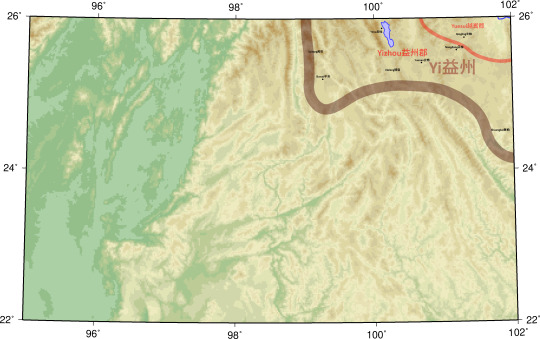






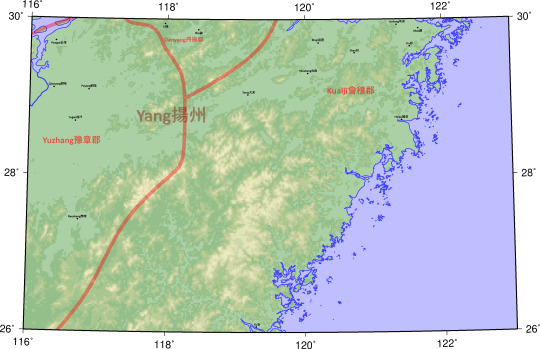
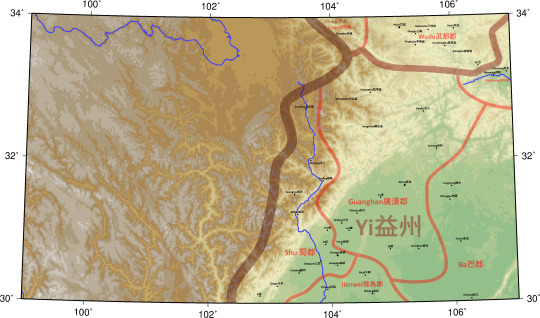

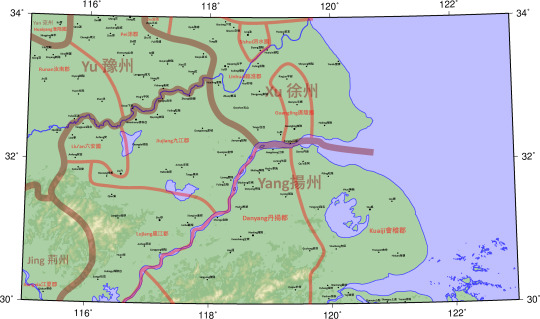



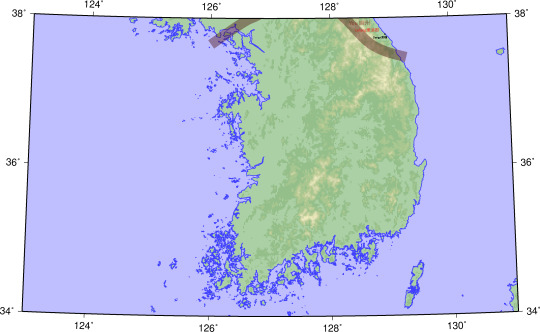
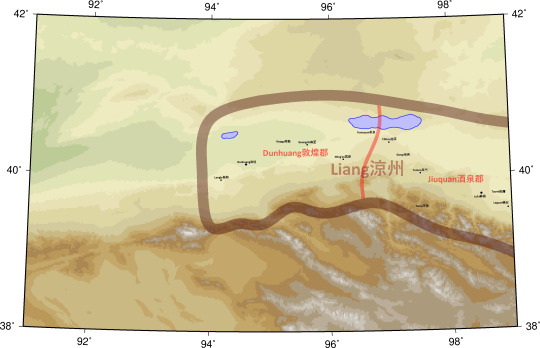
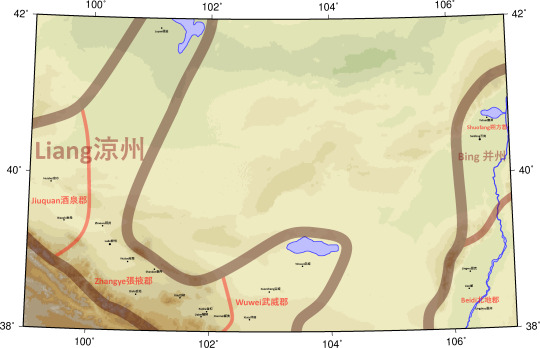


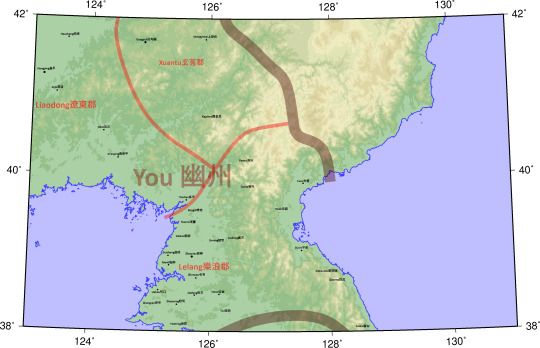
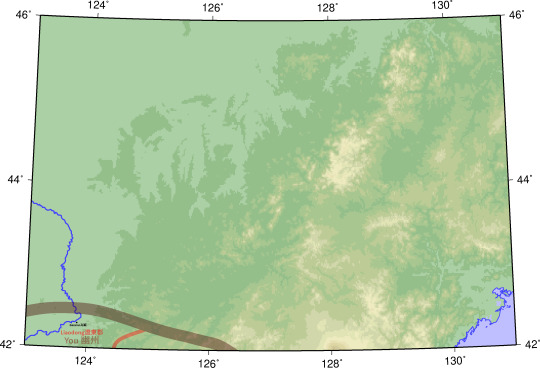
16 notes
·
View notes
Text
The Han Dynasty (202 BCE - 220 CE) was the second dynasty of Imperial China (the era of centralized, dynastic government, 221 BCE - 1912 CE) which established the paradigm for all succeeding dynasties up through 1912 CE. It succeeded the Qin Dynasty (221-206 BCE) and was followed by the Period of the Three Kingdoms (220-280 CE).
It was founded by the commoner Liu Bang (l. c. 256-195 BCE; throne name: Gaozu r. 202-195 BCE) who worked toward repairing the damage caused by the repressive regime of the Qin through more benevolent laws and care for the people. The dynasty is divided into two periods:
Western Han (also Former Han): 202 BCE - 9 CE
Eastern Han (also Later Han): 25-220 CE
The separation is caused by the rise of the regent Wang Mang (l. 45 BCE - 23 CE) who declared the Han Dynasty finished and established the Xin Dynasty (9-23 CE). Wang's idealistic form of government failed and, after a brief period of turmoil, the Han Dynasty resumed.
Gaozu initially retained the Qin Dynasty's philosophy of Legalism but with less severity. Legalism gave way to Confucianism under the most famous monarch of the Han, Emperor Wu (also given as Wudi, Wuti, Wu the Great, r. 141-87 BCE) who, among his many other impressive achievements, also opened the Silk Road, establishing trade with the West. The Han also negotiated a peace, which was more or less observed, with the nomadic peoples of the Xiongnu and Xianbi to the north and the Xirong to the west which stabilized the borders and encouraged peace and cultural development in the arts and sciences. Many of the commonplace items taken for granted today were invented by the Han such as the wheelbarrow, the compass, the adjustable wrench, seismograph, and paper, to name only a few.
The Han also restored the cultural values of the Zhou Dynasty, which had been discarded by the Qin, encouraged literacy, and the study of history. The historian Sima Qian (l. 145/35-86 BCE) lived during this period whose Records of the Grand Historian set the standard and form for Chinese historical writings up through the 20th century CE. Chinese mythology and religion also developed during this time including the popular messianic movement focused on the Queen Mother of the West.
By c. 130 CE, however, the imperial court had become corrupt with eunuchs exercising more actual power than the Chinese emperor. By the time of the emperor Lingdi (r. 168-189 CE), the Han royal house had less actual authority than the palace eunuchs and the generals (who were more or less autonomous warlords) stationed at the borders of the country. In 184 CE, the Yellow Turban Rebellion broke out in response to high taxes and famine and these generals put it down.
Among them was Cao Cao (l. 155-220 CE) who, afterwards, waged war against his fellow commanders for control of the state. He was defeated at the Battle of Red Cliffs in 208 CE after which the country was divided between three kingdoms and the Han Dynasty fell. Its legacy is so profound that it continues to the present day and the majority of ethnic Chinese refer to themselves as Han People (Han rem) proudly in identifying themselves as descendants of the great ancient dynasty.
#studyblr#history#military history#politics#chinese politics#philosophy#technology#invention#qin dynasty#han dynasty#western han#eastern han#xin dynasty#three kingdoms#battle of red cliffs#yellow turban rebellion#china#xiongnu#xianbei#xirong#emperor gaozu of han#wang mang#emperor wu of han#sima qian#emperor ling of han#cao cao#legalism#confucianism#silk road
0 notes
Text
[Hanfu · 漢服]Chinese Western Han (202 BC – 9 AD) Traditional Clothing Hanfu Photoshoot
“这个位子 我有何坐不得?”
“我欲问鼎天下,试问谁与争锋”
"Why can't I sit in this seat?"
"I want to conquer the world, who can compete with me?"
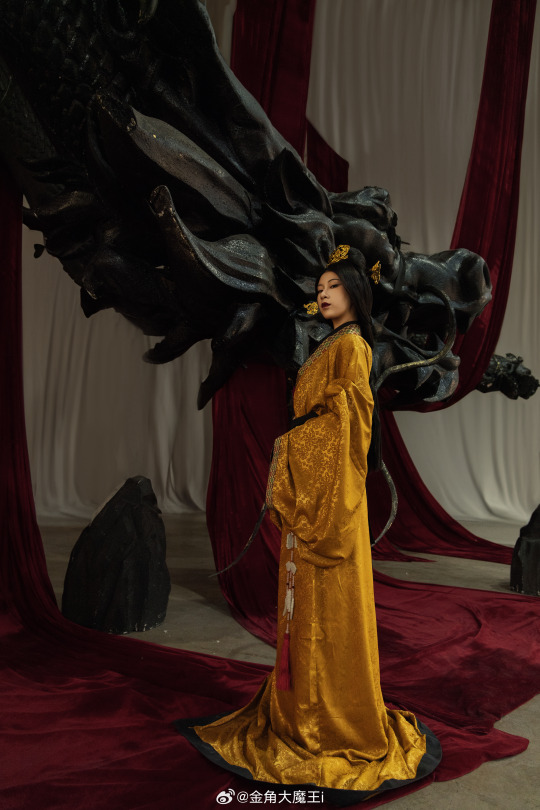
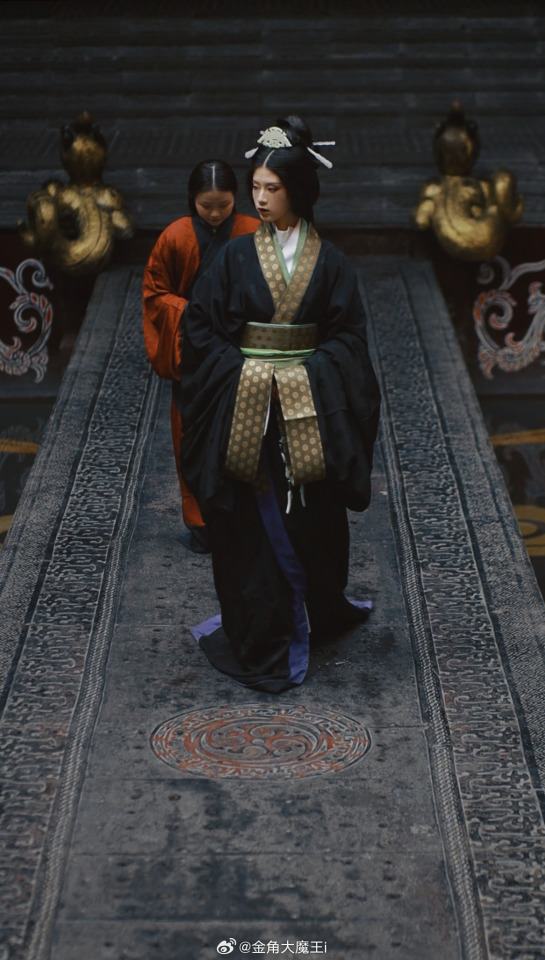






【About The First Empress of the Han Dynasty Empress Lü:Lǚ zhì(吕雉)】
Lü Zhi (241–18 August 180 BC), courtesy name E'xu (娥姁) and commonly known as Empress Lü (traditional Chinese: 呂后; simplified Chinese: 吕后; pinyin: Lǚ Hòu) and formally Empress Gao of Han (漢高后; 汉高后; Hàn Gāo Hòu), was the empress consort of Gaozu, the founding emperor of the Han dynasty. They had two known children, Liu Ying (later Emperor Hui of Han) and Princess Yuan of Lu. Lü was the first woman to assume the title Empress of China and paramount power. After Gaozu's death, she was honoured as empress dowager and regent during the short reigns of Emperor Hui and his successors Emperor Qianshao of Han and Liu Hong (Emperor Houshao).
She played a role in the rise and foundation of her husband, Emperor Gaozu, and his dynasty, and in some of the laws and customs laid down by him. Empress Lü, even in the absence of her husband from the capital, killed two prominent generals who played an important role in Gaozu's rise to power, namely Han Xin and Peng Yue, as a lesson for the aristocracy and other generals. In June 195 BC, with the death of Gaozu, Empress Lü became, as the widow of the late emperor and mother of the new emperor, Empress Dowager (皇太后, Huángtàihòu), and assumed a leadership role in her son's administration. Less than a year after Emperor Hui's accession to the throne, in 194 BC, Lü had one of the late Emperor Gaozu's consorts whom she deeply hated, Concubine Qi, put to death in a cruel manner. She also had Concubine Qi's son Liu Ruyi poisoned to death. Emperor Hui was shocked by his mother's cruelty and fell sick for a year, and thereafter no longer became involved in state affairs, and gave more power to his mother. As a result, Empress dowager Lü held the court, listened to the government, spoke on behalf of the emperor, and did everything (臨朝聽政制, "linchao ting zhengzhi"). With the untimely death of her 22-year-old son, Emperor Hui, Empress dowager Lü subsequently proclaimed his two young sons emperor (known historically as Emperor Qianshao and Emperor Houshao respectively). She gained more power than ever before, and these two young emperors had no legitimacy as emperors in history; the history of this 8-year period is considered and recognized as the reign of Empress Dowager Lü. She dominated the political scene for 15 years until her death in August 180 BC, and is often depicted as the first woman to have ruled China. While four women are noted as having been politically active before her—Fu Hao, Yi Jiang, Lady Nanzi, and Queen Dowager Xuan—Lü was the perhaps first woman to have ruled over united China.
Lü Zhi was born in Shanfu County (單父; present-day Shan County, Shandong) during the late Qin Dynasty. Her courtesy name was Exu (Chinese: 娥姁; pinyin: Éxǔ). To flee from enemies, her father Lü Wen (呂文) brought their family to Pei County, settled there, and became a close friend of the county magistrate. Many influential men in town came to visit Lü Wen. Xiao He, then an assistant of the magistrate, was in charge of the seating arrangement and collection of gifts from guests at a banquet in Lü Wen's house, and he announced, "Those who do not offer more than 1,000 coins in gifts shall be seated outside the hall." Liu Bang (later Emperor Gaozu of Han), then a minor patrol officer (亭長), went there bringing a single cent and said, "I offer 10,000 coins." Lü Wen saw Liu Bang and was so impressed with him on first sight, that he immediately stood up and welcomed Liu into the hall to sit beside him. Xiao He told Lü Wen that Liu Bang was not serious, but Liu ignored him and chatted with Lü. Lü Wen said, "I used to predict fortunes for many people but I've never seen someone so exceptional like you before." Lü Wen then offered his daughter Lü Zhi's hand in marriage to Liu Bang and they were wed. Lü Zhi bore Liu Bang a daughter (later Princess Yuan of Lu) and a son, Liu Ying (later Emperor Hui of Han).
Liu Bang later participated in the rebellion against the Qin Dynasty under the insurgent Chu kingdom, nominally-ruled by King Huai II. Lü Zhi and her two children remained with her father and family for most of the time during this period.
Even after Emperor Gaozu (Liu Bang)'s victory over Xiang Yu, there were still unstable areas in the empire, requiring the new government to launch military campaigns to pacify these regions thereafter. Gaozu placed Empress Lü Zhi and the crown prince Liu Ying (Lü Zhi's son) in charge of the capital Chang'an and making key decisions in court, assisted by the chancellor Xiao He and other ministers. During this time, Lü Zhi proved herself to be a competent administrator in domestic affairs, and she quickly established strong working relationships with many of Gaozu's officials, who admired her for her capability and feared her for her ruthlessness. After the war ended and Emperor Gaozu returned, she remained in power and she was always influential in many of the country's affairs.
In his late years, Emperor Gaozu started favouring one of his younger consorts, Concubine Qi(戚夫人), who bore him a son, Liu Ruyi, who was instated as Prince of Zhao in 198 BC, displacing Lü Zhi's son-in-law Zhang Ao (Princess Yuan of Lu's husband). Gaozu had the intention of replacing Liu Ying with Liu Ruyi as crown prince, reasoning that the former was too "soft-hearted and weak" and that the latter resembled him more. Since Lü Zhi had strong rapport with many ministers, they generally opposed Gaozu's decision but the emperor seemed bent on deposing Liu Ying. Lü Zhi became worried and she approached Zhang Liang for help, and the latter analysed that Gaozu was changing the succession on grounds of favouritism. Zhang Liang invited the "Four Whiteheads of Mount Shang", a group of four reclusive wise men, to persuade Gaozu to change his decision. The four men promised to assist Liu Ying in future if he became emperor, and Gaozu was pleased to see that Liu Ying had their support. Gaozu told Concubine Qi, "I wanted to replace (the crown prince). Now I see that he has the support of those four men; he is fully fledged and difficult to unseat. Empress Lü is really in charge!" This marked the end of the dispute over the succession and affirmed Liu Ying's role as crown prince.
In June 195 BC, Emperor Gaozu died and was succeeded by Liu Ying, who became historically known as Emperor Hui of Han. Lü Zhi was honoured by Emperor Hui as empress dowager. She exerted more influence during the reign of her son than she had when she was empress, and she became the powerful and effective lead figure in his administration.
Lü Zhi did not harm most of Gaozu's other consorts and treated them according to the rules and customs of the imperial family. For example, consorts who bore male children that were instated as princes were granted the title of "Princess Dowager" (王太妃) in their respective sons' principalities. One exception was Concubine Qi, whom Lü Zhi greatly resented because of the dispute over the succession between Liu Ruyi (Qi's son) and Liu Ying. Liu Ruyi, the Prince of Zhao, was away in his principality, so Lü Zhi targeted Concubine Qi. She had Qi stripped of her position, treated like a convict (head shaved, in stocks, dressed in prison garb), and forced to do hard labour in the form of milling rice.
Roles in the deaths of Concubine Qi and Liu Ruyi
Lü Zhi then summoned Liu Ruyi, who was around the age of 12 then, to Chang'an, intending to kill him together with his mother. However Zhou Chang (周昌), the chancellor in Liu Ruyi's principality, whom Lü Zhi respected because of his stern opposition to Emperor Gaozu's proposal to make Liu Ruyi crown prince, temporarily protected Liu Ruyi from harm by responding to Lü Zhi's order that, "The Prince of Zhao is ill and unfit for travelling over long distances." Lü Zhi then ordered Zhou Chang to come to the capital, had him detained, and then summoned Liu Ruyi again. Emperor Hui tried to save Liu Ruyi by intercepting his half-brother before the latter entered Chang'an, and kept Liu Ruyi by his side most of the time. Lü Zhi refrained from carrying out her plans for several months because she feared that she might harm Emperor Hui as well.
One morning in the winter of 195-194 BC, Emperor Hui went for a hunting trip and did not bring Liu Ruyi with him because the latter refused to get out of bed. Lü Zhi's chance arrived, so she sent an assassin to force poisoned wine down Liu Ruyi's throat. The young prince was dead by the time Emperor Hui returned. Lü Zhi then had Concubine Qi killed in an inhumane manner: she had Qi's limbs chopped off, eyes gouged out, ears sliced off, nose sliced off, tongue cut out, forced her to drink a potion that made her mute, and had her thrown into a latrine. She called Qi a "human swine" (人彘). Several days later, Emperor Hui was taken to view the "human swine" and was shocked to learn that it was Concubine Qi. He cried loudly and became ill for a long time. He requested to see his mother and said, "This is something done not by a human. As the empress dowager's son, I'll never be able to rule the empire" From then on, Emperor Hui indulged himself in carnal pleasures and ignored state affairs, leaving all of them to his mother, and this caused power to fall completely into her hands.
When Lu first came to the court, she planned to establish the Lu family members as "kings (nobles)". This was not only to commemorate her deceased relatives, but also to strengthen her power in the court. However, Wang Ling, the prime minister at the time, immediately pointed out that the great ancestor Liu Bang(Husband of Lu, founding emperor of Han Dynasty)once killed the white horse and agreed that "if someone who are not Liu family be come the king, the whole world should attack them." Therefore, the move of establishing a foreign surname as the king violated the ancestral system established by Liu Bang and was really inappropriate.
Faced with the obstruction of Wang Ling, Empress Lu responded by deposing him and insisting on honoring her deceased father and two brothers as King Lu Xuan, King Wu Wu, and King Zhao Zhao. After setting this precedent, Lu was out of control. She not only named her three nephews Lu Tai, Lu Chan, and Lu Lu as King Lu, King Liang, and King Zhao respectively, but also named her grandnephew Lu Tong. He was the King of Yan, and his grandson Zhang Yan was granted the title of King of Lu.
In addition, there are also quite a few people with the surname Lu who have been granted the title of marquis. As a result, it can be said that many princes surnamed Lu appeared in the court in the blink of an eye. They controlled the government and became the cornerstone and support for Empress Lu to control the right to speak in the court.
Empress Lu's life was emblematic of the intricate power dynamics of the Han Dynasty in ancient China. Born into a modest family, Lu rose to prominence through her marriage to Emperor Gaozu. Her astute political acumen and strategic alliances allowed her to wield significant influence behind the throne. As the mother of several emperors, she orchestrated their ascensions and manipulated court politics to consolidate power for her family. However, her ruthless pursuit of control and elimination of rivals earned her both admirers and enemies. In the end, her ambitions led to her downfall, as her unchecked power and manipulation of succession angered the nobility.As a result, after her death, the Lu family was retaliated and killed by the nobles and courtiers who supported the Han Dynasty, and the family was almost exterminated.Empress Lu's life illustrates the delicate balance of power, ambition, and intrigue in ancient Chinese imperial courts.
Literati in every dynasty in China often likened women who attempted to participate in government affairs and influence national policies to Empress Lü, saying they were vicious. One of them was Wu Zetian, the first official female emperor of China. However, compared with Empress Lü, Wu Zetian was more talented. Unlike Empress Lü, who was simply vicious, she ignored the system and stability of the empire and put personal and family interests first.
________________
📸Photo & Model :@金角大魔王i
🔗Weibo:https://weibo.com/1763668330/NFVOXthxX
________________
#chinese hanfu#Western Han (202 BC – 9 AD)#hanfu#Empress Lü#Lǚ zhì(吕雉)#china history#chinese history#hanfu accessories#hanfu_challenge#chinese traditional clothing#china#chinese#woman in history#漢服#汉服#中華風#金角大魔王i#historical fashion
181 notes
·
View notes
Text
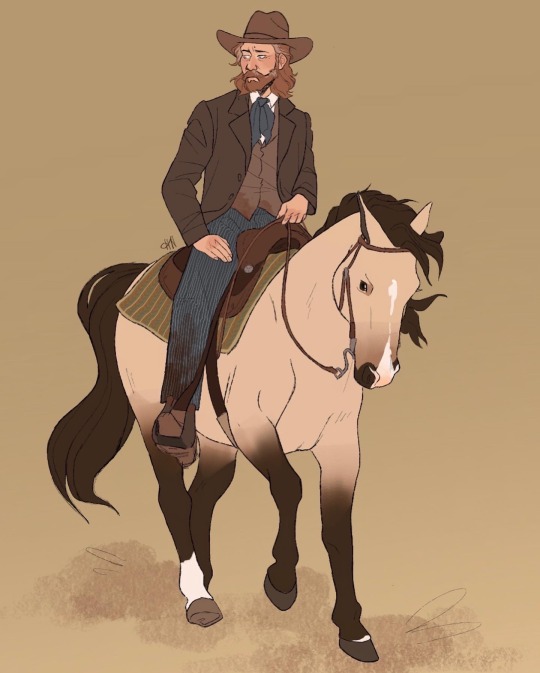
me, outside lucasfilm hq with a bullhorn: HERES HOW THE KENOBI SERIES CAN STILL BE A WESTERN ! GIVE HIM A HORSE !
#obi wan kenobi#kenobi series#kenobi show#star wars tcw#the revenge of the sith#cowboy#cowboycore#western au#listen this is ROUGH#if u tell me anything is wrong with the saddle i’ll hunt u for sport#i have not touched a western saddle in like four years i don’t want to hear it#anyway MORE WHERE THIS CAME FROM#han doodles
1K notes
·
View notes
Text
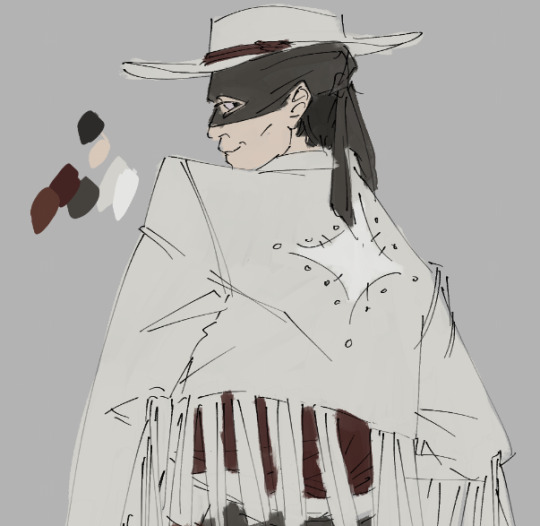


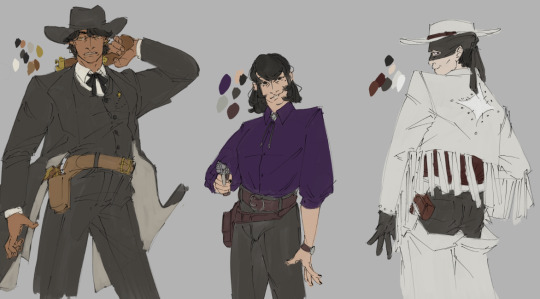
remember i said cowboy/western yhk? bam
#i really love these designs but i fucking hate drawing guns#and cowboy hats#so#dont get too excited#still had a good time though!#orv#omniscient reader#omniscient reader's viewpoint#kdj#kim dokja#hsy#han sooyoung#yjh#yoo joonghyuk#yhk#yoohankim#orv au#orv western au#bard draws
291 notes
·
View notes
Text
Daniel Brühl with Glasses
Choose your four-eyed Danny:

Alexander Kerner, Good Bye, Lenin! (2003)

Salvador Puig Antich, Salvador (2006)

Hans Krämer, The Coming Days (2010)

Daniel Domscheit-Berg, The Fifth Estate (2013)

Helmut Zemo, Captain America: Civil War (2016)

Ernst Schmidt, The Cloverfield Paradox (2018)

Dr. Laszlo Kreizler, The Alienist (2018 - 2020)

Erik Jan Hanussen, The King's Man (2021)

Matthias Erzberger, All Quiet on the Western Front (2022)
#daniel brühl#daniel brühl with glasses#Helmut Zemo#Captain America: Civil War#Laszlo Kreizler#The Alienist#Ernst Schmidt#The Cloverfield Paradox#Alexander Kerner#Good Bye Lenin!#Hans Krämer#The Coming Days#Daniel Domscheit-Berg#The Fifth Estate#Matthias Erzberger#All Quiet on the Western Front#Erik Jan Hanussen#The King's Man#Salvador Puig Antich#Salvador#my gifs#gifset
60 notes
·
View notes
Text
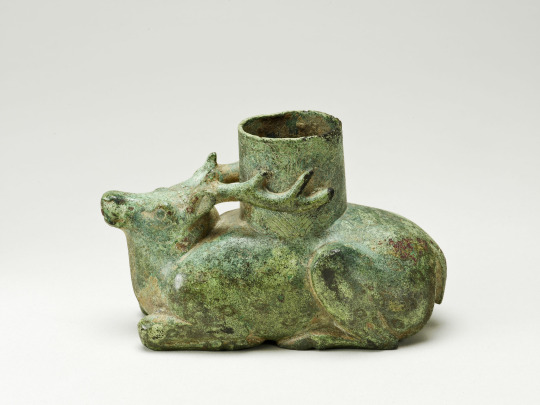
Recumbent Stag
China, Western Han dynasty (206 B.C.–A.D. 9)
74 notes
·
View notes
Text
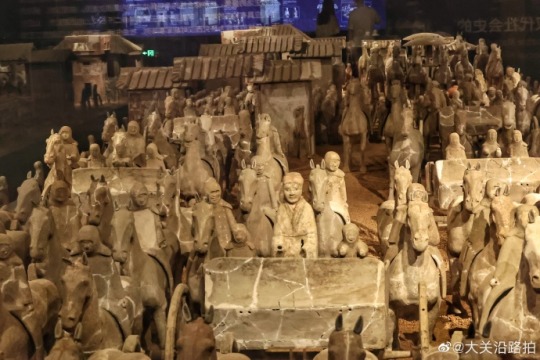
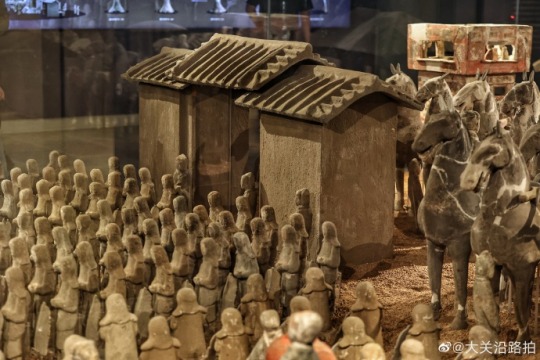
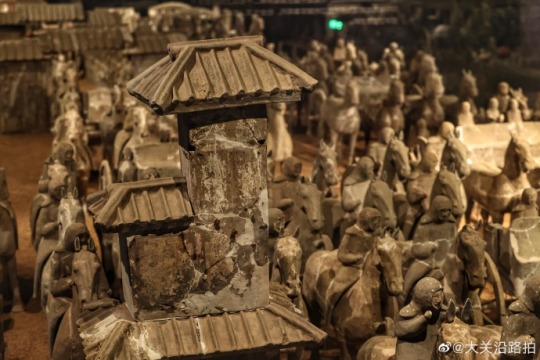


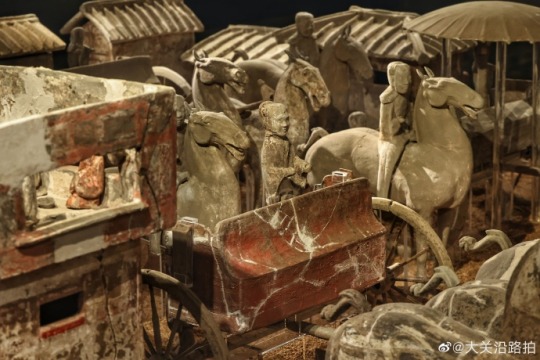
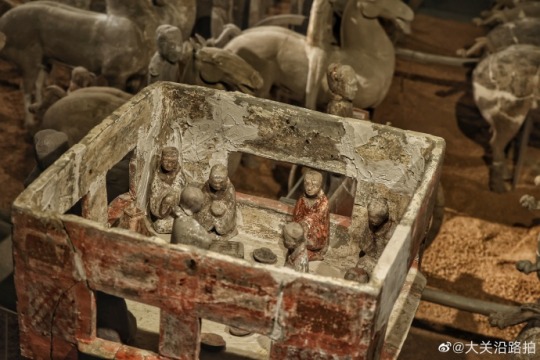

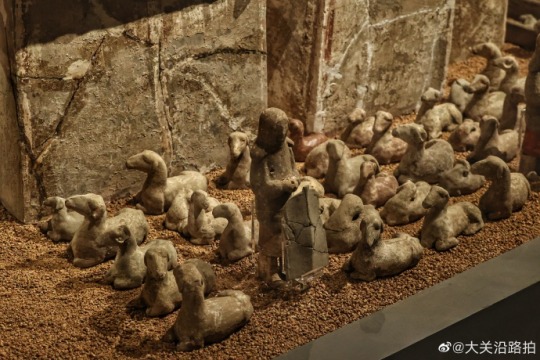

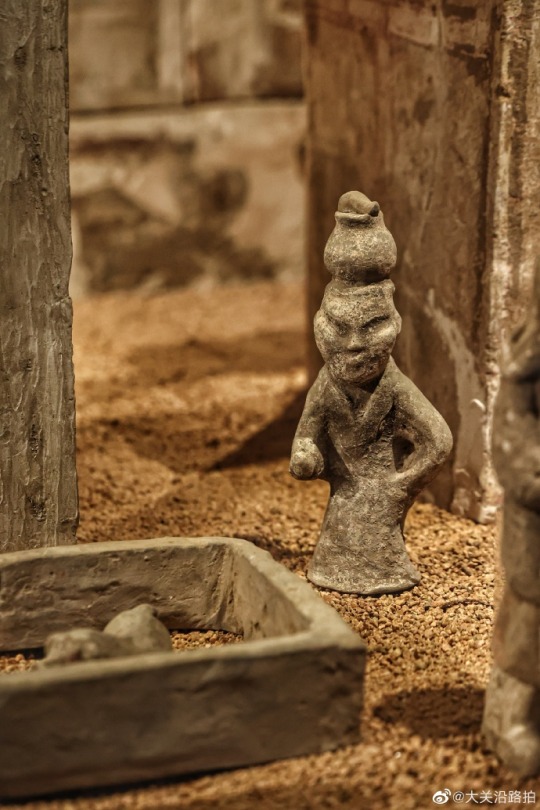
Several shots from a clay installation, impressive for its verisimilitude. It reproduces a large-scale scene of traveling by horse-drawn carriages and the life of aristocratic manors in the Western Han Dynasty.
Qi Heritage Museum (齊文化博物館), Zibo, Shandong.
Photo: ©大关沿路拍
#ancient china#chinese art#chinese history#chinese culture#western han dynasty#chinese miniatures#miniature art#sculpture art#ancient tomb#archeology#clay#clay art#clay sculpting#figurine#pottery#ceramic art#ceramic#tomb art#chinese customs
57 notes
·
View notes
Text

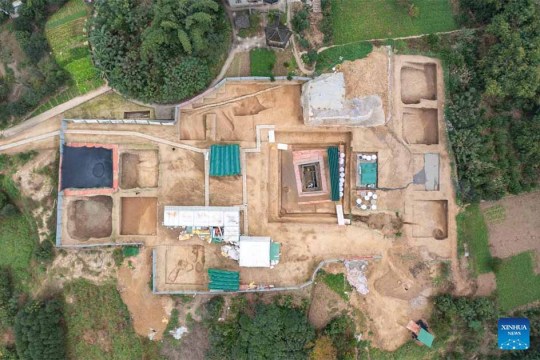
A Rare Western Han Dynasty Tomb Found in Southwest China
A well-preserved tomb, dating back to the Western Han Dynasty (202 BC-25 AD), with a clear recorded year has been discovered in Wulong District of southwest China's Chongqing Municipality, the Chongqing Cultural Relics and Archaeology Research Institute said Tuesday.
This archaeological project is a rescue excavation and protection work carried out to forge cooperation with the Baima project, the last of a cascade of hydropower stations on the section of the Wujiang River in Chongqing.
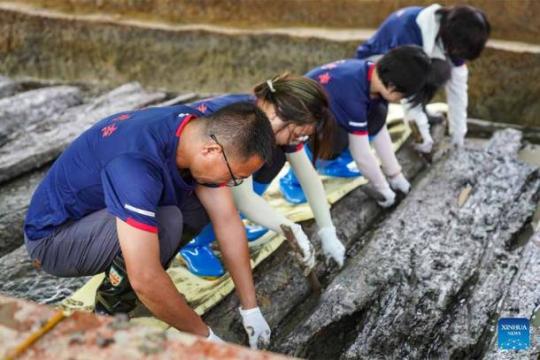

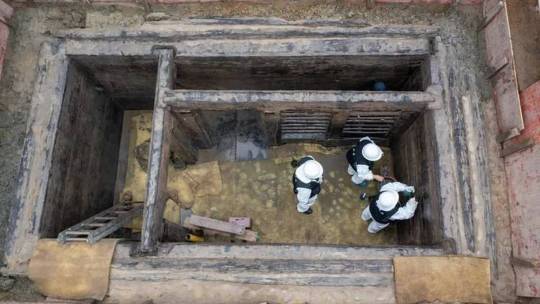

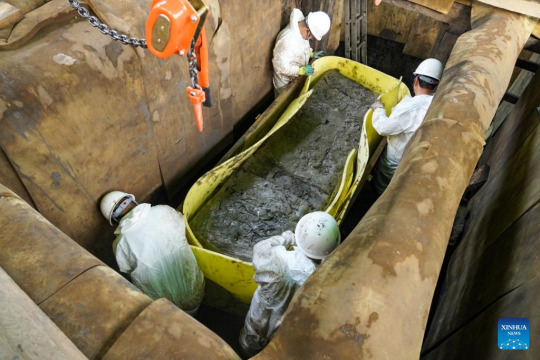

With the approval of the National Cultural Heritage Administration, the Chongqing Cultural Relics and Archaeology Research Institute set up a work team of more than 20 people from different archaeology research institutes and universities to excavate the site in March this year.
According to Huang Wei, the leader of the archaeological project, a collection of tombs dating from the Han Dynasty (202 BC-220 AD) to the Six Dynasties period (222-589) were newly discovered as part of this project. Among them, the tomb dating back to the Western Han Dynasty was the most important, and more than 600 precious cultural relics such as lacquerware, wood ware, bamboo ware, pottery and bronze ware were unearthed from the tomb.

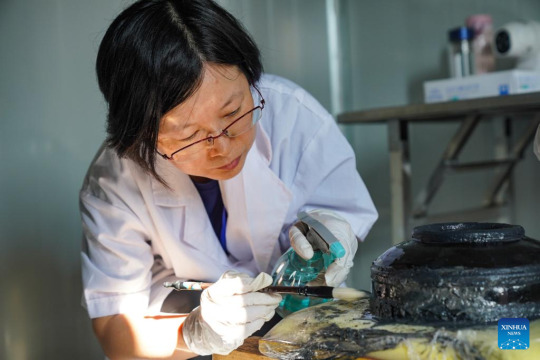
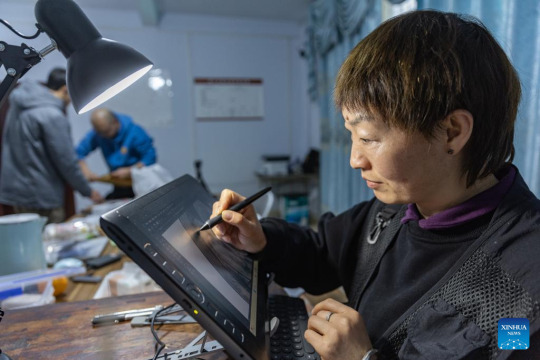
Due to the tomb being filled with water throughout the year, it remains undisturbed and unharmed, and the funerary objects in the tomb are well preserved.
"What is exciting about this discovery is not just the large number of unearthed artifacts but also the list of burial items containing a precise year record, which has been verified as 193 BC, providing clarity on the tomb's burial timeframe. An unearthed jade ware from the tomb shows the prominent position of the tomb owner," Huang said.
The list of burial items found in the tomb is complete and clearly records the name, quantity and size of the funerary objects.
The tomb discovered this time is the one containing the largest quantity of lacquered wood and bamboo wares ever found at one time in the upper reaches of the Yangtze River in China, said Bai Jiujiang, head of the Chongqing Cultural Relics and Archaeology Research Institute.

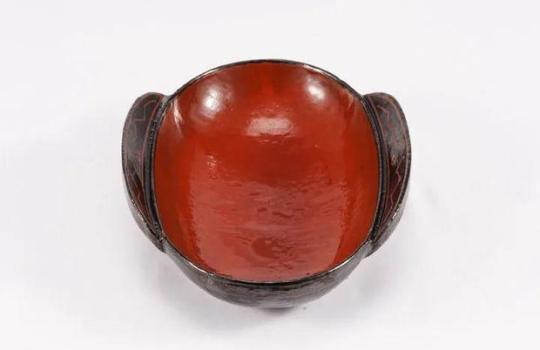

Based on publicly available information, it is also the earliest tomb of the Western Han Dynasty found in China, with a clear recorded year, according to Bai.
This is a major archaeological discovery regarding the Qin and Han Dynasties in the Wujiang River Basin, offering physical evidence and important basic research materials for future study of burial customs and the comparative analysis of famous artifacts from the early Western Han Dynasty, according to the archaeologists.
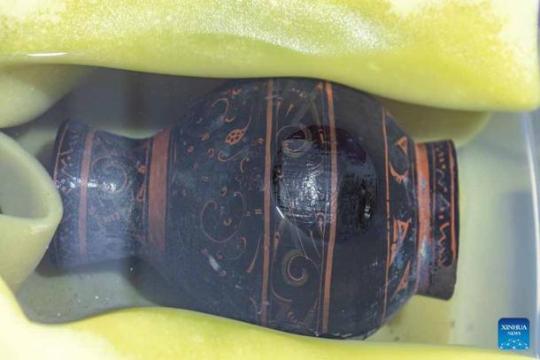

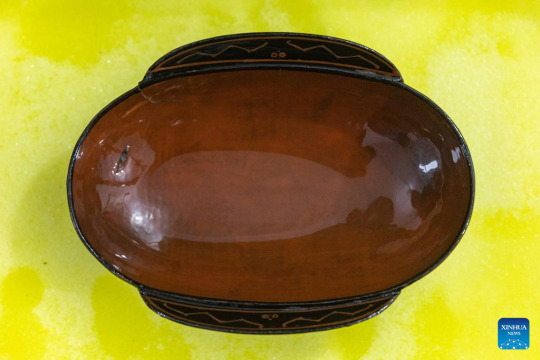

#A Rare Western Han Dynasty Tomb Found in Southwest China#Tomb Holding Hundreds of Ancient Relics Unearthed in China#Western Han Dynasty#ancient tomb#ancient grave#grave goods#ancient artifacts#archeology#archeolgst#history#history news#ancient history#ancient culture#ancient civilizations#ancient china#chinese history#chinese art
62 notes
·
View notes
Text
Dungeon meshi has wonderful and thought out world building but the inherent creator bias still shows through sometimes in small funny ways
#dungeon meshi#ep 1#why are they eating with chopsticks when the island is mostly western in architecture/culture etc#hahaha#i always think its so funny even in like medieval isekais/webtoons#when everyone has european names#castles#dresses etc#but their school system is japanese or their meals etc#like the small stuff the author thinks is normal#calling the duke 'hyung' when there is absolutely no way that would happened at that time#its a bit endearing#i read a brothers grimm/fairy tale inspired manga#and the protag is a grimm brother who befriends hans christian andersen and subsequently calls him “an-chan”#western media has that a lot too#people eating with forks when they would use chopsticks#having meals with beef in them when its a terrain where cows wouldnt live and chicken or goat or fish would make more sense#eastern media aallllwaaysss including an age based honorifics system#western media often modeling religion along the abrahamic faiths#etc
23 notes
·
View notes
Text
when they said ship wars I didn’t expect fighting with myself whether I want the main character to end up with the mean rich asian girl who is also a fashion icon and a great friend or the mean rich asian guy who is also a fashion icon and a great friend
#spoiler#on the one hand beautiful wlw representation!!#on the other hand a straight option who is incredibly fun and has none of the western toxic masculinity traits!#he’s literally fighting the mc over hand cream#yes this is about xo kitty#xo kitty#thank you Jenny Han
127 notes
·
View notes
Text
Administrative geography of Western Han (38,107)
According to Ban Gu's Book of Han.

Bing 并州
Taiyuan太原郡
Suiren葰人
Langmeng狼孟
Yu盂
Fenyang汾陽
Yangqu陽曲
Yuanping原平
Lüsi慮虒
Guangwu廣武
Shang上郡
Fushi膚施
Baitu白土
Zhenglin楨林
Gaowang高望
Qiuci龜茲
Xihe西河郡
Fuchang富昌
Pingding平定
Meiji美稷
Dacheng大成
Yinyin圜陰
Hongmen鴻門
Zengshan增山
Yinyang圜陽
Guangyan廣衍
Humeng虎猛
Guluo穀羅
Linshui臨水
Shuofang朔方郡
Shuofang朔方
Xiudu修都
Linhe臨河
Huqiu呼遒
Qusou渠搜
Woye沃野
Guangmu廣牧
Linrong臨戎
Wuyuan五原郡
Jiuyuan九原
Wuyuan五原
Linwo臨沃
Heyin河陰
Nanxing南興
Wudu武都
Yiliang宜梁
Manbai曼柏
Chengyi成宜
Guyang稒陽
Xi'anyang西安陽
Hemu河目
Yunzhong雲中郡
Yunzhong雲中
Xianyang咸陽
Taolin陶林
Zhenling楨陵
Duhe犢和
Shaling沙陵
Yuanyang原陽
Sha'nan沙南
Beiyu北輿
Wuquan武泉
Dingxiang定襄郡
Chengle成樂
Tongguo桐過
Wujin武進
Wugao武皋
Luo駱
Antao定陶
Wucheng武城
Wuyao武要
Dingxiang定襄
Yanmen鴈門郡
Shanwu善無
Woyang沃陽
Fanzhi繁畤
Zhongling中陵
Yinguan陰館
Loufan樓煩
Wuzhou武州
Wangtao𣷪陶
Juyang劇陽
Guo崞
Pingcheng平城
Di埒
Mayi馬邑
Qiangyin彊陰
Ji冀州
Zhending真定國
Zhending真定
Feilei肥纍
Mianman綿曼
Zhongshan中山國
Lunu盧奴
Xinshi新市
Wuji毋極
Julu鉅鹿郡
Xiaquyang下曲陽
Changshan常山郡
Sangzhong桑中
Lingshou靈壽
Puwu蒲吾
Shangquyang上曲陽
Jiumen九門
Jingxing井陘
Leyang樂陽
Nanxingtang南行唐
You 幽州
Dai代郡
Sanggan桑乾
Daoren道人
Dangcheng當城
Gaoliu高柳
Macheng馬城
Banshi班氏
Yanling延陵
Quanjing狋氏
Juru且如
Pingyi平邑
Yangyuan陽原
Donganyang東安陽
Canhe參合
Pingshu平舒
Dai代
Lingqiu靈丘
Guanghe廣昌
Lucheng鹵城
Shanggu上谷郡
Gouwu雊瞀
Ning寧
Guangning廣寧
Not located
Shang上郡
Muhe木禾
Jingshi京室
Luodu洛都
Yuandu原都
Tuixie推邪
Wangsong望松
Yidu宜都
Xihe西河郡
Zouyu騶虞
Gaoze鵠澤
Lejie樂街
Tujing徒經
Guangtian廣田
Yilan益闌
Xuanwu宣武
Qianzhang千章
Wuche武車
Rao饒
Fangli方利
Xidu西都
Pinglu平陸
Nishi觬是
Boling博陵
Yanguan鹽官
Wuyuan五原郡
Guling固陵
Wenguo文國
Puze蒱澤
Moda莫䵣
Yunzhong雲中郡
Yangshou陽壽
Dingxiang定襄郡
Duwu都武
Xiangyin襄陰
Fulu復陸
County locations and ancient rivers, lakes, and shorelines from The Historical Atlas of China.
I have intentionally stuck to the Hanshu where it differs from the Historical Atlas.
10 notes
·
View notes
Text
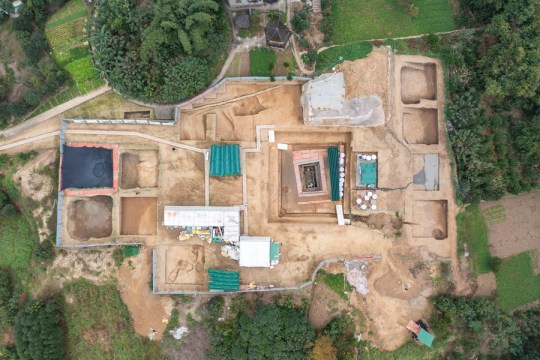
They've had a good year, archaeologically-wise, in China with some pretty outstanding discoveries.
24 notes
·
View notes
Photo



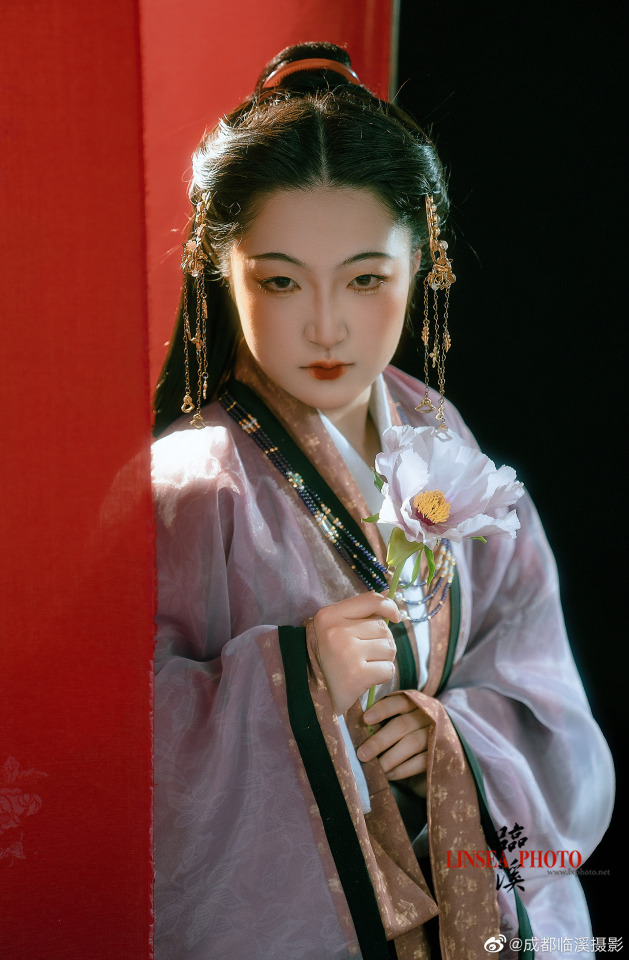
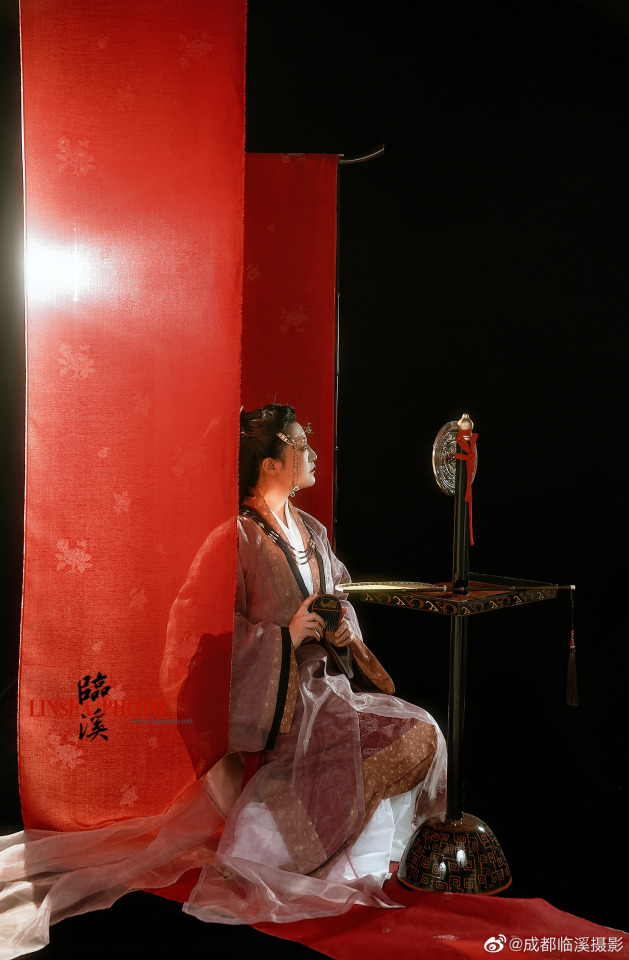
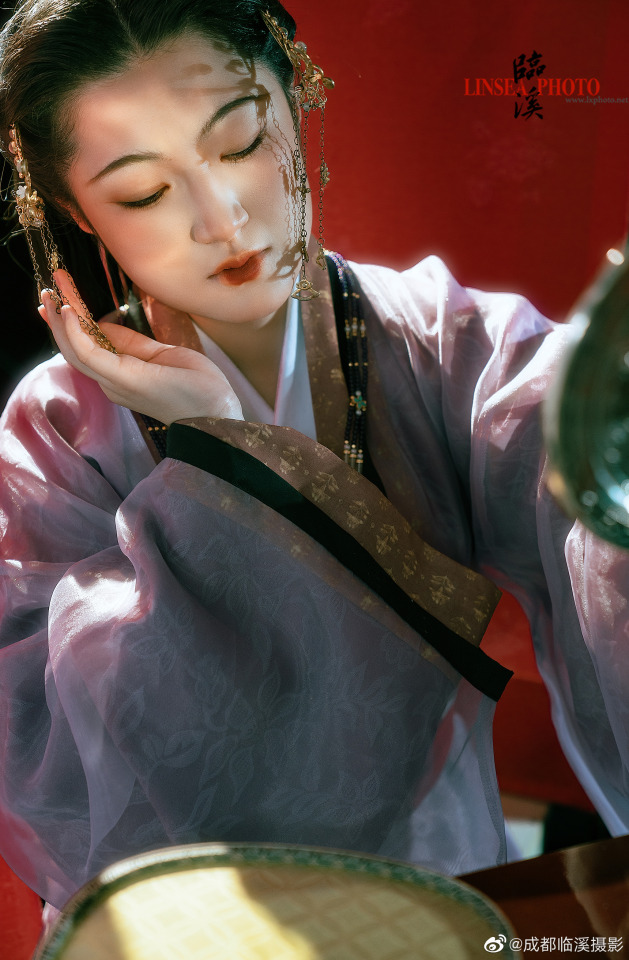
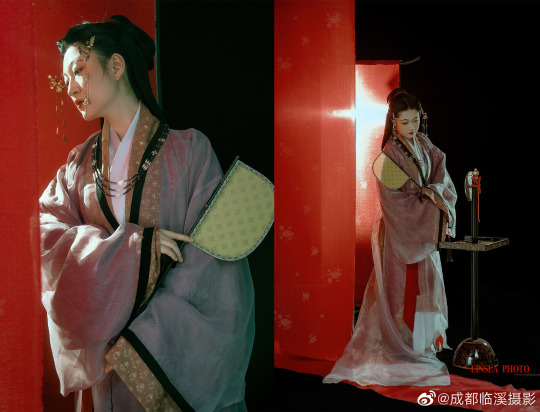

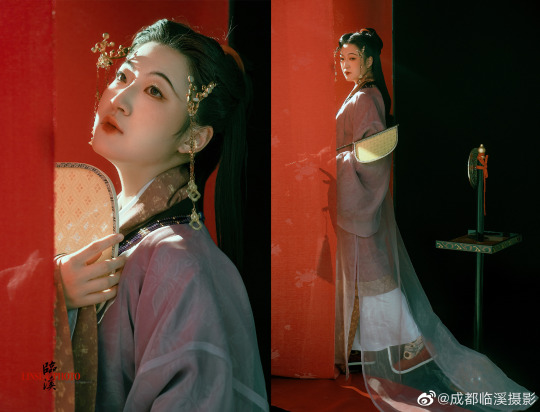
【Han Dynasty Artifact Reference】
China Western Han Dynasty Painted Female Figurines (early and middle period of Western Han)
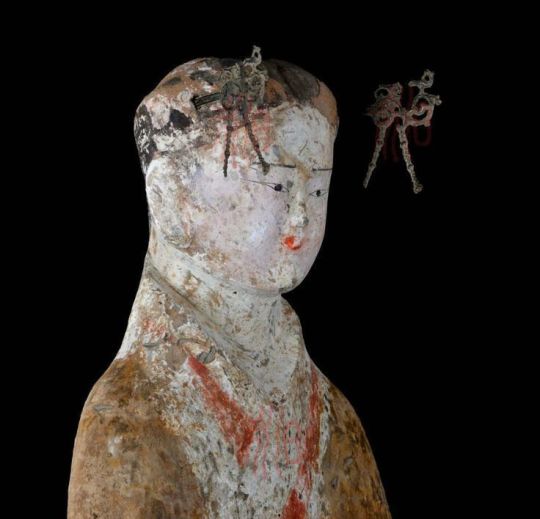

・Plain yarn garment (straight) Mawangdui No. 1 Han Tomb (Xinzhui)
material: silk,size: dress length 132 cm, sleeve length 181.5 cm
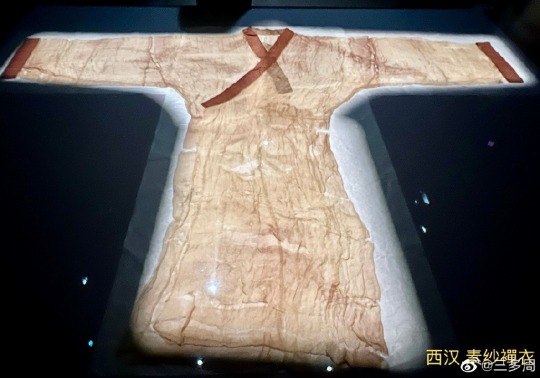
[Hanfu · 漢服]Chinese Han Dynasty Traditional Clothing Hanfu Photoshoot【风露霓裳】
_______
📝 Plan: 成都临溪摄影
📸Photo: 何力
💄Stylist: 百丽 熊熊
🧚🏻 Model: 弋歌
🔗Weibo:https://weibo.com/1648616372/N3L7fw0hT
_______
#chinese hanfu#Han Dynasty#western han dynasty#chinese history#hanfu art#hanfu#chinese traditional clothing#chinese#chinese coustume#chinese relics#hanfu accessories#chinese culture#China History#hanfu photoshoot#chinese historical fashion#漢服#汉服#成都临溪摄影#何力#百丽 熊熊#弋歌#风露霓裳
263 notes
·
View notes
Text
imagining a song dynasty assassin who disguises themself as an official and puts razor blades on the ridiculously long wings of their hat a la oddjob in goldfinger (1964). they spin around and decapitate a quarter of the court
#lame that i keep on having these song dynasty specific ideas when my current writing project is based on the western han dynasty#ryddles
79 notes
·
View notes